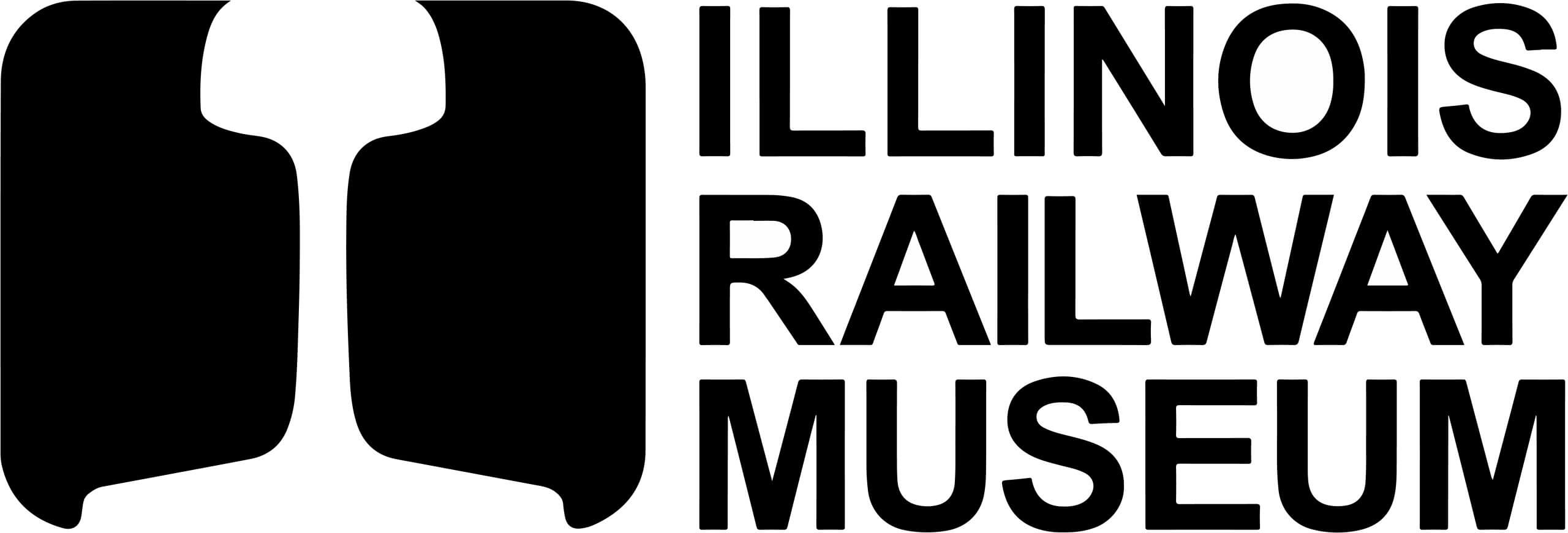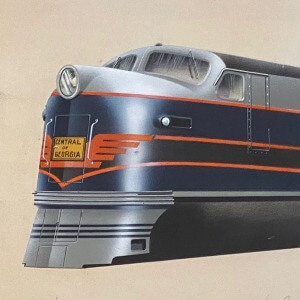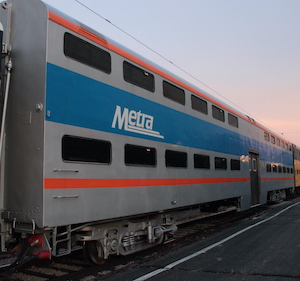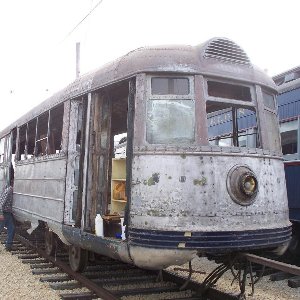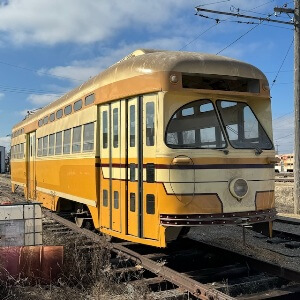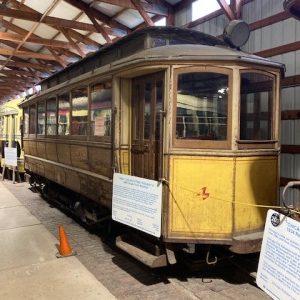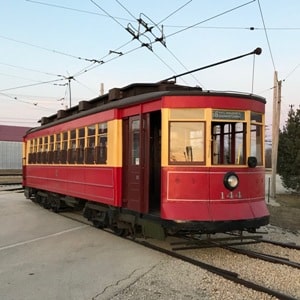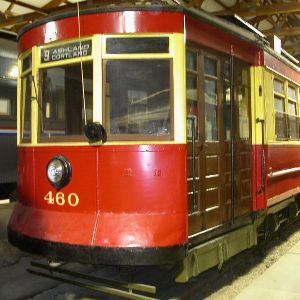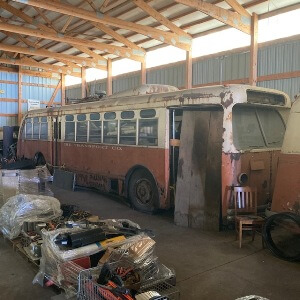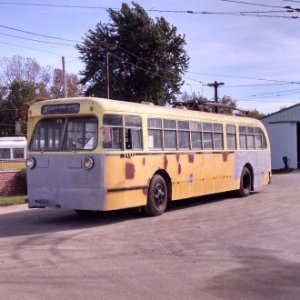Search Results for: Pullman
EMD Technical Library
Collection Name: Electro-Motive Division Technical Library Location: Strahorn Library, Pullman Library Description: Books, color illustrations Size: Percent Digitized: 0% For more information on the Pullman Library, see www.irm.org/pullmanlibrary
Municipality of Metro Seattle 656
The War Production Board and the Office of Defense Transportation restricted manufacturing and sale of new trolley buses during WWII. Only Pullman-Standard’s Worcester, Massachusetts, plant was permitted to build them during the entire war; other manufacturers were busy making war material instead. Seattle was able to order 30 trolley buses
Metra 7658
Metra 7658 is a bi-level coach designed for commuter service out of Chicago. It is known as a “gallery car” because the upper level is divided, with a gap (or “gallery”) down the middle of the car to enable the conductor to collect fares from both levels while standing on
Chicago Surface Lines 4001
Chicago Surface Lines 4001 is the last surviving pre-PCC streamliner. During the early 1930s the Electric Railway Presidents Conference Committee, or PCC, worked to develop a modern streetcar. Chicago ordered car 4001 and one other as prototypes to test modern technologies. Car 4001 was all-aluminum, to save weight, and used
Cleveland Transit System 4223
The only Pullman-built PCC car in the museum’s collection is Cleveland Transit System 4223. It is largely a standard postwar PCC car but features an unusual rooftop monitor which contains an air circulating system. It is in the midst of a major multi-year rebuilding effort to return it to original
West Chicago Street Railroad 4
West Chicago Street Railroad 4 is the oldest electric car at IRM. Its early history is obscure but it was built in 1895, when many streetcar lines in Chicago were still operated by cable cars, and remained in service into the mid-1910s, after which it was stored for potential emergency
Chicago Surface Lines 144
Chicago Surface Lines 144 is the archetype of the classic Chicago streetcar. It is an “Old Pullman,” one of 600 identical cars built for Chicago in 1908. For decades this type served as the stereotypical Chicago streetcar. It was designed for Pay As You Enter (PAYE) fare collection, with passengers
Chicago Transit Authority 460
The classic Chicago streetcar was epitomized by the “Old Pullman,” a deck-roof wooden car design of which Chicago had 600 examples. Chicago Transit Authority car 460 is one of those cars and is one of two “Old Pullmans” preserved at IRM. These cars were used all over the city but
Milwaukee & Suburban Transport 350
M&ST 350 is an electric trolley bus built by Pullman-Standard at its plant in Worcester, Massachusetts. It is typical of hundreds of Pullman-built trolley buses used in many large cities in the United States. Builder: Pullman-Standard Year Built: 1947 Model: 44CX Seats: 44 Length: 38ft Width: 8ft 6in Height: 10ft
City Transit 435
Trolley buses in Dayton, Ohio, have a long and rather unusual history. One of six private streetcar companies in the city, the Dayton Street Railway Co., suffered a car barn fire in 1932 that destroyed most of its fleet. It borrowed cars from other companies to get by, but falling
